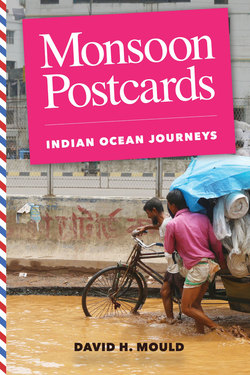Monsoon Postcards

Реклама. ООО «ЛитРес», ИНН: 7719571260.
Оглавление
David H. Mould. Monsoon Postcards
Отрывок из книги
Monsoon Postcards
Indian Ocean Journeys
.....
Until the mid-nineteenth century, all houses in Madagascar were built from wood, grasses, reeds, and other plant-based materials deemed appropriate for structures used by the living; stone, as an inert material, was reserved for the dead and used only for family tombs. In 1867, after a series of fires destroyed wooden homes in Antananarivo, Queen Ranavalona II lifted the royal edict on the use of stone and brick for construction. The royal palace was encased in stone. The first brick house built by the London Missionary Society in 1869 blended English, Creole, and Malagasy designs and served as a model for a new style built in the capital and across the highlands. Termed the trano gasy (Malagasy house), it is a two-story, brick building with four columns at the front that support a wooden verandah. In the late nineteenth century, these houses quickly replaced most of the traditional wooden houses of the andriana. As Protestant denominations and the Roman Catholic Church gained adherents, stone and brick churches were constructed.
In the early twentieth century, under French administration, the city spread out along the lower hilltops and slopes in la ville moyenne (the middle town). In the basse ville (lower town), northwest of the Analakely market area, French urban planners laid out the streets on a grid pattern aligned with a broad boulevard, now called the Avenue de l’Indépendance, with the city’s Soarano railroad station at its northwest end. Engineers drilled tunnels through two large hills, connecting isolated districts; streets were paved with cobblestones, and some later with blacktop; water, previously drawn from springs at the foot of the hills, was piped in from the Ikopa River. Since independence in 1960, the city has spread out across the plains in every direction, and urban growth has been largely uncontrolled. In the sprawling districts of the basse ville, where roughly built houses are vulnerable to fire and flooding, many residents splice into city power lines to steal electricity. Informal settlements, without adequate water supply and sanitation facilities, have grown up on agricultural land on the outskirts.
.....